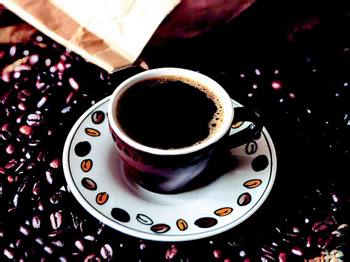Indonesian Coffee Asian Coffee

The mellow thickness of Asian coffee is higher than that of Central and South American and African beans, but its sour taste is lower, with slightly sunken wood, herb, spice and earthy flavor, and its low and stuffy aroma is higher than that of rising sour flavor.
At the end of the 17th century, the Dutch East India Company transplanted Indian Arabica trees (Tibica) to Jakarta, Java. Due to the favorable climate and soil, Arabica quickly spread to Sumatra in Java and Sulawesi, another large island in the northeast, (Sulawesi).
However, in the 1880s, Arabica, a serious leaf rust disease broke out in Java, withered out, and the Dutch changed to Robusta, which had strong disease resistance, to help Indonesia's coffee industry. Until today, Robusta is still the main coffee in Indonesia, accounting for 90% of coffee production, distributed in the low-altitude areas of Java and Bali.
The elegant Arabica is mainly distributed in the higher elevations of northern Sumatra, Sulawesi and Java, accounting for only about 10% of Indonesia's coffee production, but the reputation of Mantenin, Huangdo Mantenin, Lake Lake Tawar, Gayo Mountain, Ache, Sulawesi, Old Manning and Old Brown Java has made Indonesian coffee famous in the boutique world for decades. Not dragged down by inferior Robusta.
Han Huaizong, teacher "Coffee Studies"
Many friends who go to Indonesia like to bring back coffee powder or beans. In fact, almost all of them are low-quality robusta or Luodou instant coffee. Just as foreigners come to China one day and bring back some Lipton tea bags, we should be careful with these gifts.
Important Notice :
前街咖啡 FrontStreet Coffee has moved to new addredd:
FrontStreet Coffee Address: 315,Donghua East Road,GuangZhou
Tel:020 38364473
- Prev

Brazilian Coffee Basic Knowledge
Brazil is the world's largest coffee producer. Although Brazil has failed to increase production in recent years, it has greatly improved the quality of coffee in the past decade. It has tried its best to get rid of the argument that Brazil is not heavy in weight and Brazil beans are light as water. In recent years, it has successfully transferred to the fine coffee market.
- Next

Basic knowledge of Guatemalan coffee boutique coffee beans
Guatemala is bordered by Mexico to the north, Honduras and El Salvador to the south, the Caribbean to the east and the Pacific Ocean to the west, with tropical rain forests, volcanic geology, plateau valleys and changeable microclimate. The average elevation of dangerous countries is high, with coffee belts distributed over 1500 meters and between 14 and 16 degrees north latitude, it is easiest to grow extremely hard beans, all of which are washed, 45% of which are washed.
Related
- Detailed explanation of Jadeite planting Land in Panamanian Jadeite Manor introduction to the grading system of Jadeite competitive bidding, Red bid, Green bid and Rose Summer
- Story of Coffee planting in Brenka region of Costa Rica Stonehenge Manor anaerobic heavy honey treatment of flavor mouth
- What's on the barrel of Blue Mountain Coffee beans?
- Can American coffee also pull flowers? How to use hot American style to pull out a good-looking pattern?
- Can you make a cold extract with coffee beans? What is the right proportion for cold-extracted coffee formula?
- Indonesian PWN Gold Mandrine Coffee Origin Features Flavor How to Chong? Mandolin coffee is American.
- A brief introduction to the flavor characteristics of Brazilian yellow bourbon coffee beans
- What is the effect of different water quality on the flavor of cold-extracted coffee? What kind of water is best for brewing coffee?
- Why do you think of Rose Summer whenever you mention Panamanian coffee?
- Introduction to the characteristics of authentic blue mountain coffee bean producing areas? What is the CIB Coffee Authority in Jamaica?

